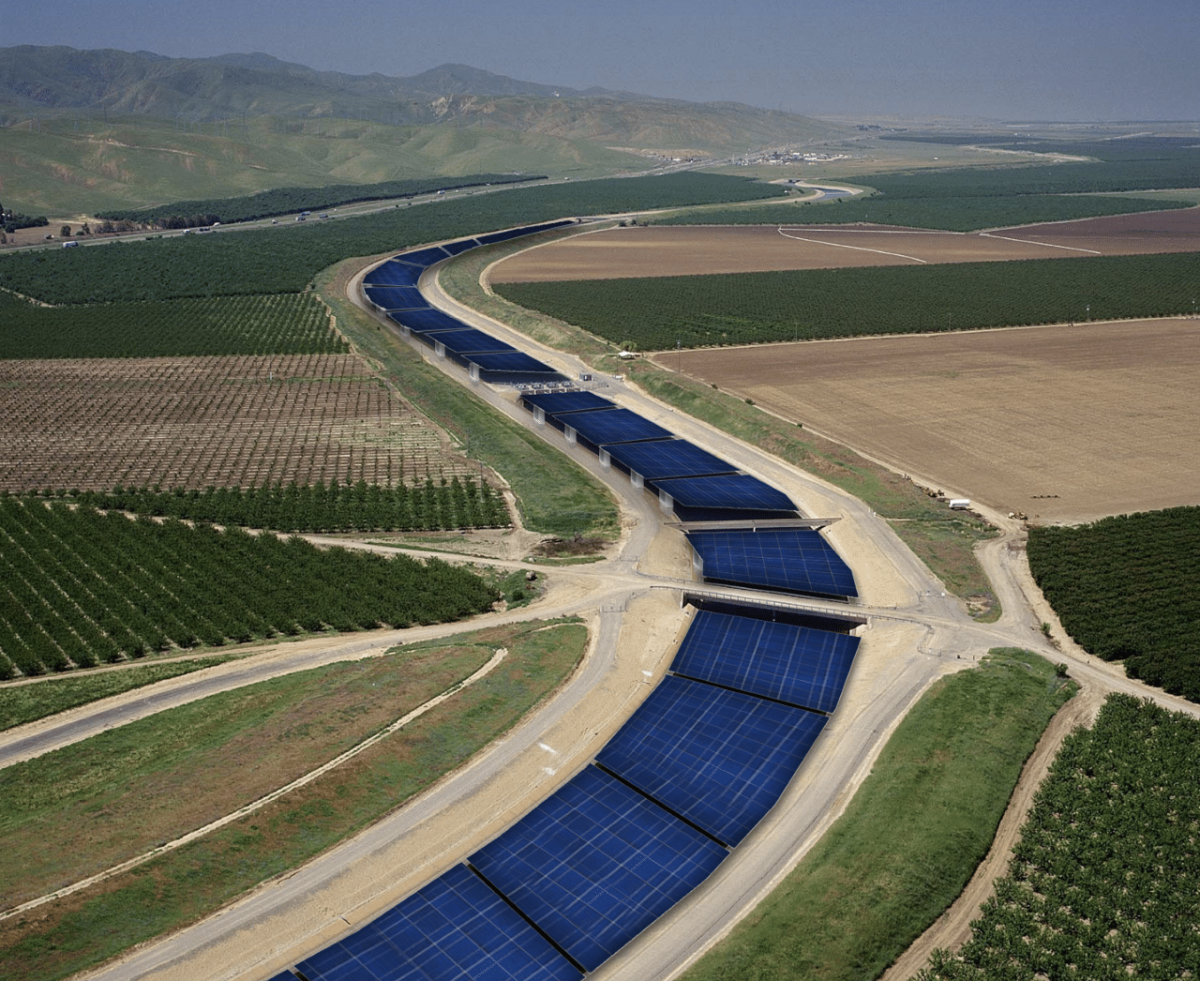Solar plants on canals have already been successfully built in India, where this technology has shown that solar power can also be generated without occupying land and, at the same time, reduce water evaporation.
According to a group of researchers from the University of California Santa Cruz, in the United States, these projects may be easily developed in the U.S. and, in particular, in California, which has the world’s largest water conveyance system, and is constantly threatened by droughts. They warned, however, that achieving a levelized cost of energy (LCOE) closer to that of ground-mounted solar will be crucial for their feasibility.
In the paper Energy and water co-benefits from covering canals with solar panels, published in Nature sustainability, the scientists conducted regional hydrologic and techno-economic simulations to assess if California’s 6,350km canal network may be suitable for the installation of similar solar arrays. “In our main results we considered cadmium telluride (CdTe) semiconductor technology but in the sensitivity analysis, we also considered multicrystalline silicon,” they specified.
Methodology
The research group applied three different methods to assess potential water evaporation: A modified version of the Penman-Monteith equation, which requires data on temperature, relative humidity, wind speed, and solar radiation; pan evaporation, which is a measurement tool considering temperature, humidity, rainfall, drought dispersion, solar radiation, and wind; and the California Irrigation Management Information System (CIMIS), which helps agricultural producers and growers efficiently manage water resources.
Three different PV plant configurations were analyzed for eight different sites across the California network of canals: A common, ground-mounted solar plant located on land adjacent to canals; a steel-truss canal-spanning design already used in several projects in India; and a suspension-cable canal-spanning design that was also utilized in India.
Costs and LCOE
The academics calculated the net present value (NPV) of the three plant typologies, considering revenues, upfront costs, installation, permitting and land, and found that plants built with tensioned cables may have a higher NPV than a ground-mounted facility, as their additional costs can be easily offset if water conservation, enhanced electricity production, avoided land costs, and reduced aquatic weed maintenance are achieved.
Plants built with a steel truss had a lower NPV than ground-mounted arrays, due to the high cost of the truss. “Although the truss, over-canal system generally has the lowest NPV, at the site with the highest water costs the steel-truss system has a higher NPV than the overground system,” the scientists explained. “The net present value of over-canal solar exceeds conventional overground solar by 20-50%, challenging the convention of leaving canals uncovered and calling into question our understanding of the most economic locations for solar power.”
The analysis also showed that there is not a big difference between the three project types, in terms of LCOE. “This is because in the case of the over-canal designs, the increases in the annual costs were proportional to the increases in annual energy output, due to evaporative cooling,” the paper reads.
Looking forward, the U.S. group said off-grid, or ‘distributed generation,' projects should be considered for initial field experiments or pilot projects. Furthermore, criteria such as proximity to the grid or land availability in a given area should also be included in future analysis.
This content is protected by copyright and may not be reused. If you want to cooperate with us and would like to reuse some of our content, please contact: editors@pv-magazine.com.




Truss or cable mounting rather than pontoon floating with anchors for a constant flow water conveyance system is a little overkill and not necessary. floating and anchoring panels over the water in 300kw islands spaced evenly apart would allow for air circulation and would not allow the water to overheat and kill fish or form algae. 70% shading of the water would help with evaporation and the gaps between islands of panels would allow servicing by boat and from shore as needed. In earthquake country, the spacing would also help with dispersion of energy from tsunami waves generated by such events.
How about floating the panels?
If I understand your question correctly, floating the panel is a good idea, if the water level stays same through the year, if there is possibility of drying canal or dropping water level, it may not be much practical.
yes floating must be interesting. maybe with pontons and pale to higher the modules like the off-shore pontons? so that they never touch the ground and are immune against rain floods/waves? Maybe also considering lower the heat with mirrors and vertical mounted bifacial modules.
Give me more information on how to get solar power systems in my community…